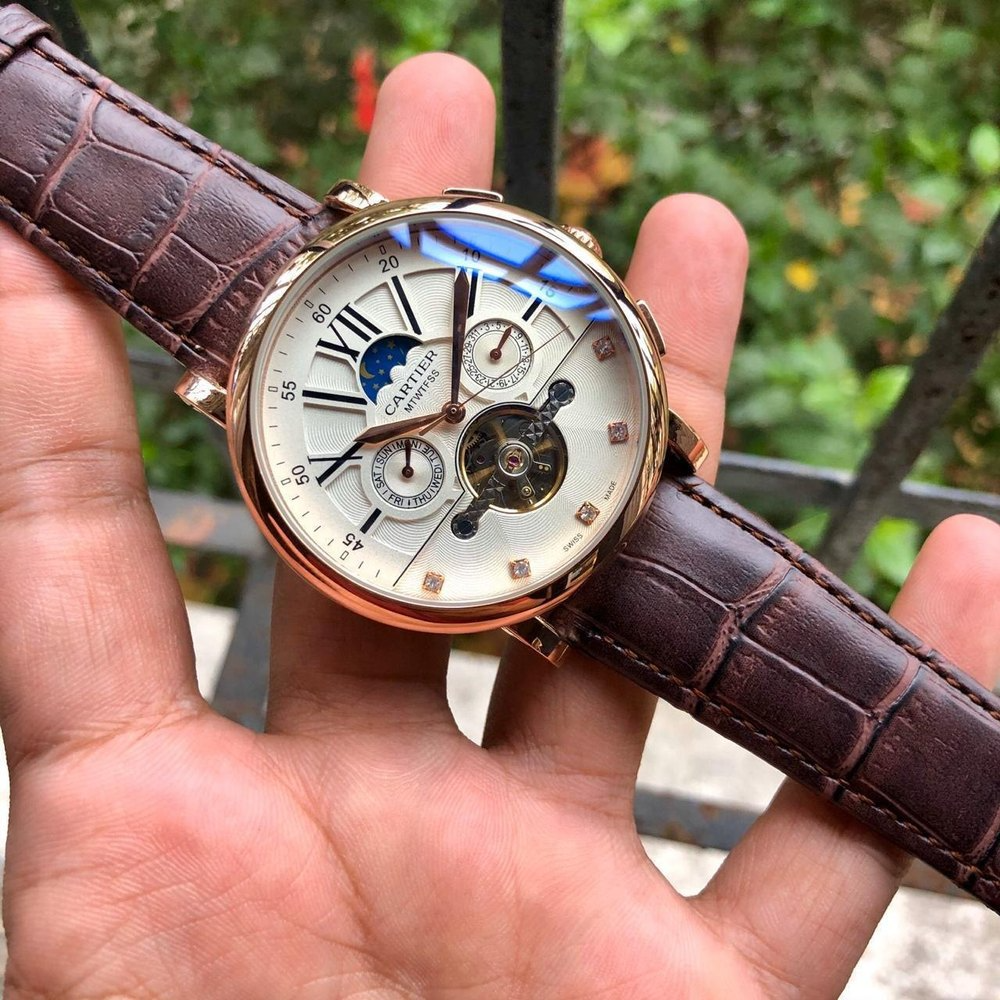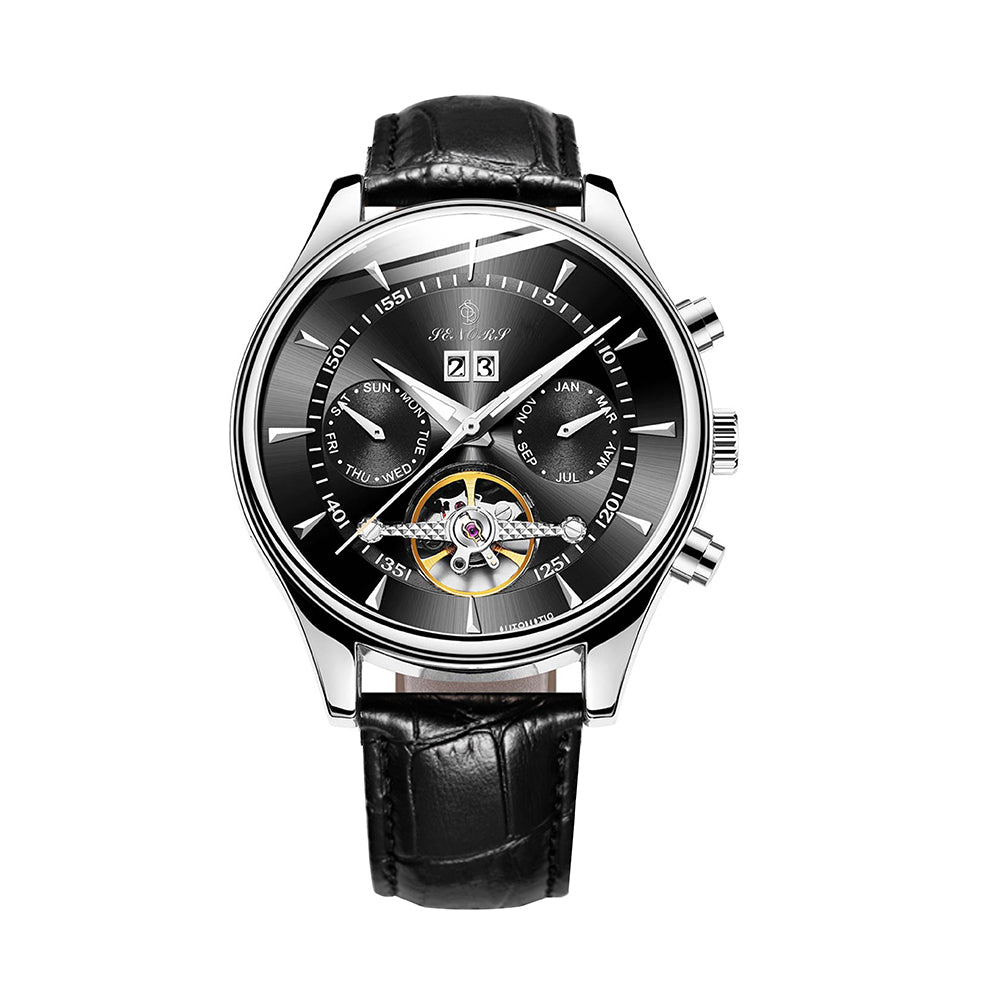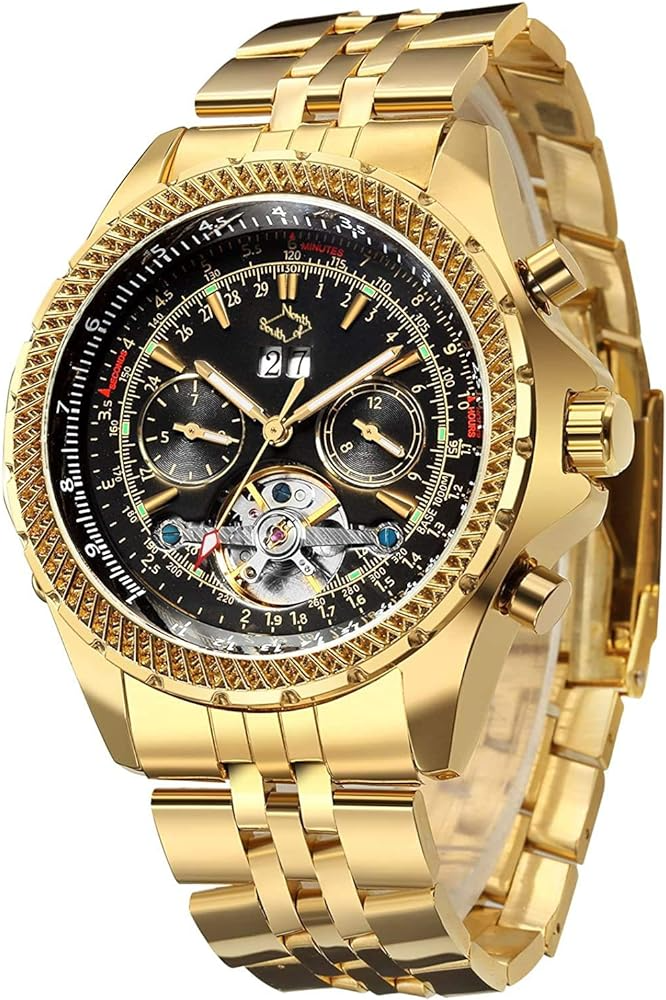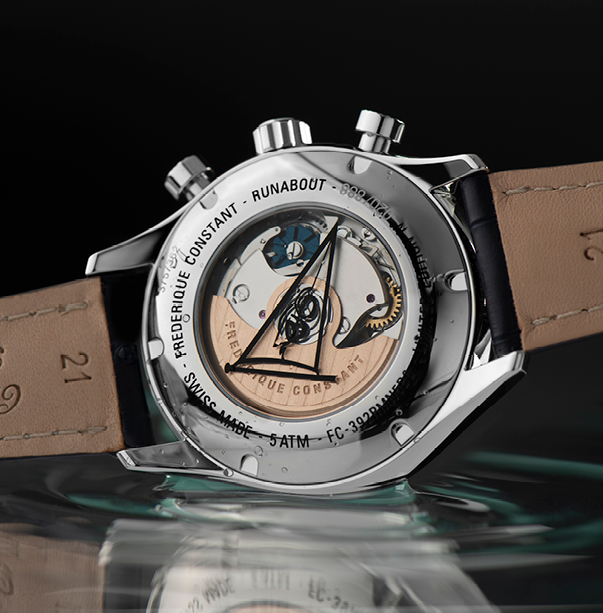In the realm of horology, where precision and artistry intertwine, automatic watches occupy a special place. Far from being mere time-telling instruments, they embody centuries-old craftsmanship and engineering brilliance. This article delves into the intricate world of automatic watches, exploring their history, mechanics, advantages, and how to choose and maintain one of these mechanical marvels.
Understanding Automatic Watches: A Glimpse into History
Automatic watches, also known as self-winding watches, trace their roots back to the late 18th century. However, it wasn’t until the early 20th century when John Harwood, a British watchmaker, commercialized the first practical design. Unlike their manual counterparts, which require daily winding, automatic watches harness the wearer’s natural motion to power the mechanism.
How Do Automatic Watches Work? Unraveling the Mystery
At the heart of every automatic watch lies a clever invention: the rotor. This semi-circular weight, mounted on a pivot, rotates freely as the wrist moves, converting kinetic energy into potential energy stored in a mainspring. This stored energy gradually releases, driving the gears and hands that display the time. The magic lies in the bidirectional winding system, ensuring efficient energy accumulation regardless of the rotor’s direction.
The Mainspring and Power Reserve
The mainspring, a coiled spring within the barrel, acts as the powerhouse. When fully wound, it provides a power reserve, typically ranging from 36 to 72 hours, allowing the watch to keep ticking even when not worn. Understanding a watch’s power reserve is crucial for ensuring accurate timekeeping.
The Balance Wheel: The Pulse of Accuracy
The balance wheel, together with its associated hairspring, forms the regulating organ. It oscillates back and forth at a constant rate, dividing time into equal segments. This delicate system, often likened to a human heartbeat, is what governs the accuracy of an automatic watch.
The Allure of Automatic Watches: Why They Remain Timeless
In an era dominated by digital clocks and smartwatches, automatic watches persist as symbols of tradition, craftsmanship, and mechanical ingenuity.
A Kinetic Connection
Wearing an automatic watch creates a unique bond between the wearer and the timepiece. The fact that it relies on the wearer’s movements to function adds a personal touch, making each watch a living testament to its owner’s lifestyle.
Heirloom Quality and Collectability
Crafted with meticulous attention to detail, automatic watches are built to last generations. Many high-end brands utilize premium materials and intricate designs, turning them into cherished heirlooms. Moreover, limited edition and vintage pieces often appreciate in value over time, attracting collectors worldwide.
The Artistry of Mechanics
Automatic watches showcase the intricate dance of gears, springs, and rotors, visible through exhibition casebacks in many models. This open view into the inner workings appeals to those who appreciate the aesthetics of micro-engineering.
Choosing Your Perfect Automatic Watch: A Buyer’s Guide
Navigating the diverse world of automatic watches requires a thoughtful approach.
Define Your Style and Needs
Consider whether you prefer a dressy timepiece for formal occasions, a robust sports watch for adventures, or a versatile everyday companion. Your lifestyle and fashion preferences should guide your choice.
Budget Considerations
Automatic watches span a wide price range, from affordable entry-level models to luxurious high-end pieces. Establishing a budget early on helps narrow down options.
Brand Reputation and Movement Quality
Research brands known for their quality movements, such as Swiss-made watches renowned for their precision. Japanese manufacturers also offer reliable and innovative alternatives.
After-Sales Service and Warranty
Ensure the brand or retailer provides adequate after-sales service and a warranty. Regular maintenance by skilled watchmakers is crucial for longevity.
Maintaining Your Automatic Watch: Preserving Timeless Beauty
Automatic watches, with their intricate mechanisms and timeless elegance, are more than just timekeepers; they’re wearable art pieces that carry a sense of tradition and craftsmanship. To ensure your automatic watch continues to function flawlessly and retains its beauty for generations, proper maintenance is essential. Here are some key steps to preserving the longevity and precision of your automatic watch:
1. Regular Wearing or Winding
Automatic watches harness energy from the wearer’s movement through a rotating weight (rotor) inside the watch. If you don’t wear your watch daily, it will stop after approximately 36-72 hours, depending on the power reserve. To keep it running, manually wind it by turning the crown clockwise until you feel resistance. For consistent use, wearing it for at least 8 hours a day should keep it sufficiently wound.
2. Proper Storage
When not in use, store your watch in a dry, cool place away from direct sunlight and magnetic fields. A watch winder can be beneficial if you have multiple automatic watches, as it keeps them wound and ready to wear while preserving their accuracy. Ensure the winder settings match the specific winding requirements of your watch.
3. Cleanliness Matters
Dust, sweat, and other debris can accumulate on the case and bracelet, affecting both appearance and functionality over time. Use a soft, dry cloth to wipe down your watch regularly. For metal bracelets and cases, a gentle cleaning solution specifically designed for watches can be used occasionally, followed by a thorough rinse and dry. Leather straps should be cleaned with a damp cloth and allowed to air dry naturally.
4. Water Resistance Check
Even if your watch is water-resistant, this feature can degrade over time due to wear and tear or gasket deterioration. It’s recommended to have your watch’s water resistance checked every year by a professional, especially if you plan on swimming or diving with it. Avoid exposing your watch to drastic temperature changes or high-pressure water sources like showers or hot tubs, as these can damage the seals.
5. Regular Servicing
Like any precision instrument, an automatic watch requires periodic servicing by a certified watchmaker. This typically includes disassembling, cleaning, lubricating, and adjusting the movement, as well as replacing worn parts. Depending on the manufacturer’s recommendations and usage, servicing intervals range from 3 to 5 years. Keeping up with regular services ensures optimal performance and prevents minor issues from escalating.
6. Handle with Care
Avoid subjecting your watch to strong impacts or vibrations, which can affect its accuracy or even damage internal components. When putting on or taking off your watch, handle the case and not the crown, as excessive force on the crown can compromise its water resistance.

By following these maintenance practices, you can ensure that your automatic watch remains a reliable companion and a cherished heirloom for years to come. Remember, investing in regular care is a small price to pay for preserving the timeless beauty and precision of these mechanical marvels.




